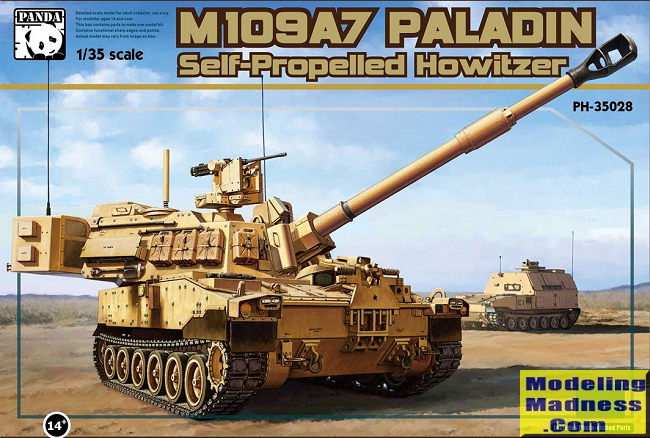
| HISTORY |
Panda Hobby 1/35 M109A7 'Paladin'
| KIT #: | PH 35028 |
| PRICE: | $60-80 from Asian suppliers. |
| DECALS: | Stencils |
| REVIEWER: | Scott Van Aken |
| NOTES: | 2019 release |

| HISTORY |
The M109 is an American 155 mm turreted self-propelled howitzer, first introduced in the early 1960s to replace the M44. It has been upgraded a number of times, most recently to the M109A7. The M109 family is the most common Western indirect-fire support weapon of maneuver brigades of armored and mechanized infantry divisions.
The M109 has a crew of four: the section chief/commander, the driver, the gunner, and the ammunition handler/loader. The chief or gunner aims the cannon left or right (deflection) and up and down (quadrant).
The British Army replaced its M109s with the AS-90. Several European armed forces have or are currently replacing older M109s with the German PzH 2000. Upgrades to the M109 were introduced by the U.S. (see variants below) and by Switzerland (KAWEST). With the cancellation of the U.S. Crusader and Non-Line-of-Sight Cannon, the M109A6 ("Paladin") will remain the principal self-propelled howitzer for the U.S. for the foreseeable future.
The newest M109 version for U.S. service is the M109A7, formerly known as the M109A6 Paladin Integrated Management (PIM). The M109A7 shares common components with the Bradley Fighting Vehicle such as the engine, transmission, and tracks. This creates commonality with other systems and maximizes cost-savings in production, parts inventory, and maintenance personnel. The M109A7's on-board power systems harness technologies originally developed for the Non-Line-of-Sight Cannon; the electric drive is faster than the previous hydraulic system, and the automatic rammer more consistently rams the round into the gun for consistent velocities and better accuracy. It features a 600-volt on-board power system to accommodate additional armor and future networking technologies as they become ready. The M109A7 can sustain a one-round per-minute rate of fire and a maximum rate of fire of four rounds per-minute.
Weighing 78,000 lb (35,000 kg), the M109A7 is 10,000 lb (4,500 kg) heavier than its predecessor, and it has the capacity to grow to 110,000 lb (50,000 kg). Even with the weight increase, the M109A7 can travel faster than previous versions at 38 mph (61 km/h) and is more maneuverable than a Bradley Fighting Vehicle.
Prototypes of the vehicle underwent government testing in preparation for a low-rate initial production decision. The testing included reliability, availability, and maintainability mission testing as well as ballistic hull and turret testing. M109A7 was slated to begin low-rate initial production by 2013. The U.S. Army plans on procuring a fleet of 580 sets of M109A7 howitzers and M992A3 ammunition support vehicles.
In October 2013, the Defense Acquisition Board approved the decision to start M109A7 production. The FY 2014 budget called for $340.8 million in Paladin funding, which would be two dozen vehicle sets at $14.4 million per vehicle. The Army plans to buy 133 vehicles in 66 one-half vehicle sets starting in 2014, although one M109A7 howitzer and two supporting M992A3 ammunition carriers will be destroyed during tests. A full-rate production decision planned for February 2017] On 31 October 2013, BAE received a $668 million contract to begin low-rate initial production of the M109A7. The first M109A6 and M992A2 vehicles were disassembled and reassembled to M109A7 and M992A3 standard as part of low-rate initial production beginning in summer 2014. Low-rate production deliveries began in April 2015] The contract for full rate production was signed in December 2017 with 48 vehicles slated for construction. The Army plans to upgrade 689 Paladins to A7-standard.
The Army is looking to increase the capabilities of the M109A7. By introducing the new XM1113 rocket-assisted projectile (RAP), it can reach 40 km (25 mi) from the current 39-caliber barrel, and a planned barrel extension to 58-caliber can increase its range to 70 km (43 mi). The Army is also working on an autoloader to increase sustained rate of fire to 6–10 rounds per minute. These improvements are being developed under the Extended Range Cannon Artillery (ERCA) program, with the upgraded system designated the M1299.
| THE KIT |
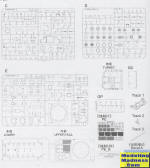 Way
back when, one of the few tracked armor kits I built was the Italeri
1/35 M109. This kit shows just how far kit technology has
progressed.
Way
back when, one of the few tracked armor kits I built was the Italeri
1/35 M109. This kit shows just how far kit technology has
progressed.
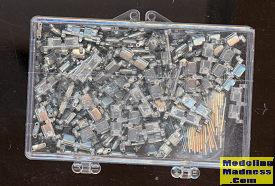
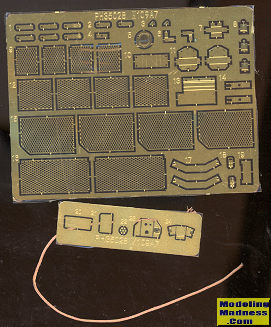 suspension
attachment pieces are not the same. Each of the road wheels has
separate tires which is appreciated and makes them much easier to
paint.
suspension
attachment pieces are not the same. Each of the road wheels has
separate tires which is appreciated and makes them much easier to
paint. 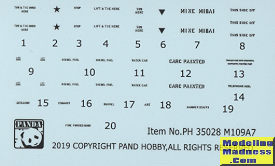
| CONCLUSIONS |
| REFERENCES |
https://en.wikipedia.org/wiki/M109_howitzer
October 2019
My thanks to Glen Coleman and Panda Hobby for the preview sample. Get yours today from your favorite retailer.
If you would like your product reviewed fairly and fairly quickly, please contact the editor or see other details in the Note to Contributors.
Back to the Main Page Back to the Previews Index Page Back to the Review Index Page